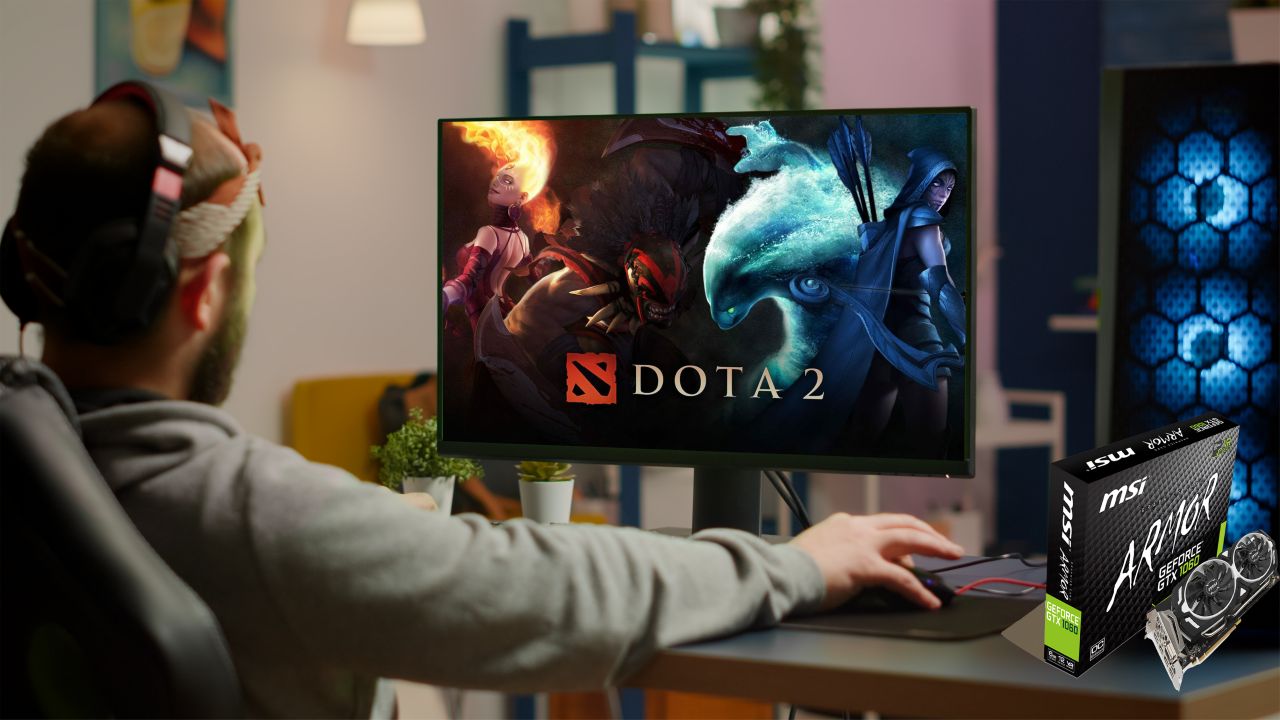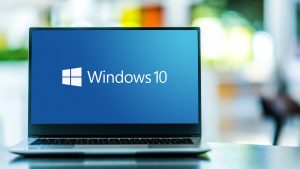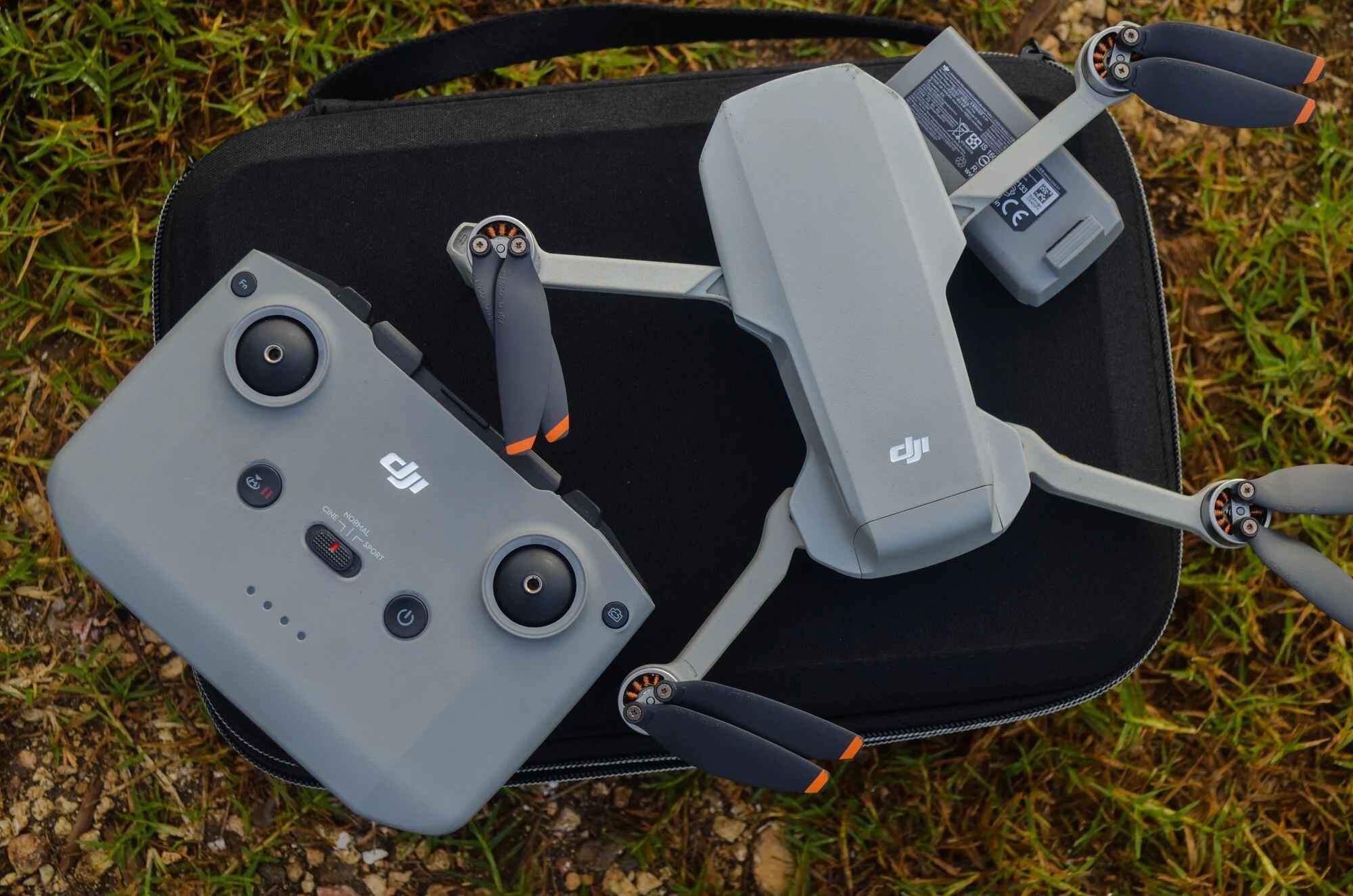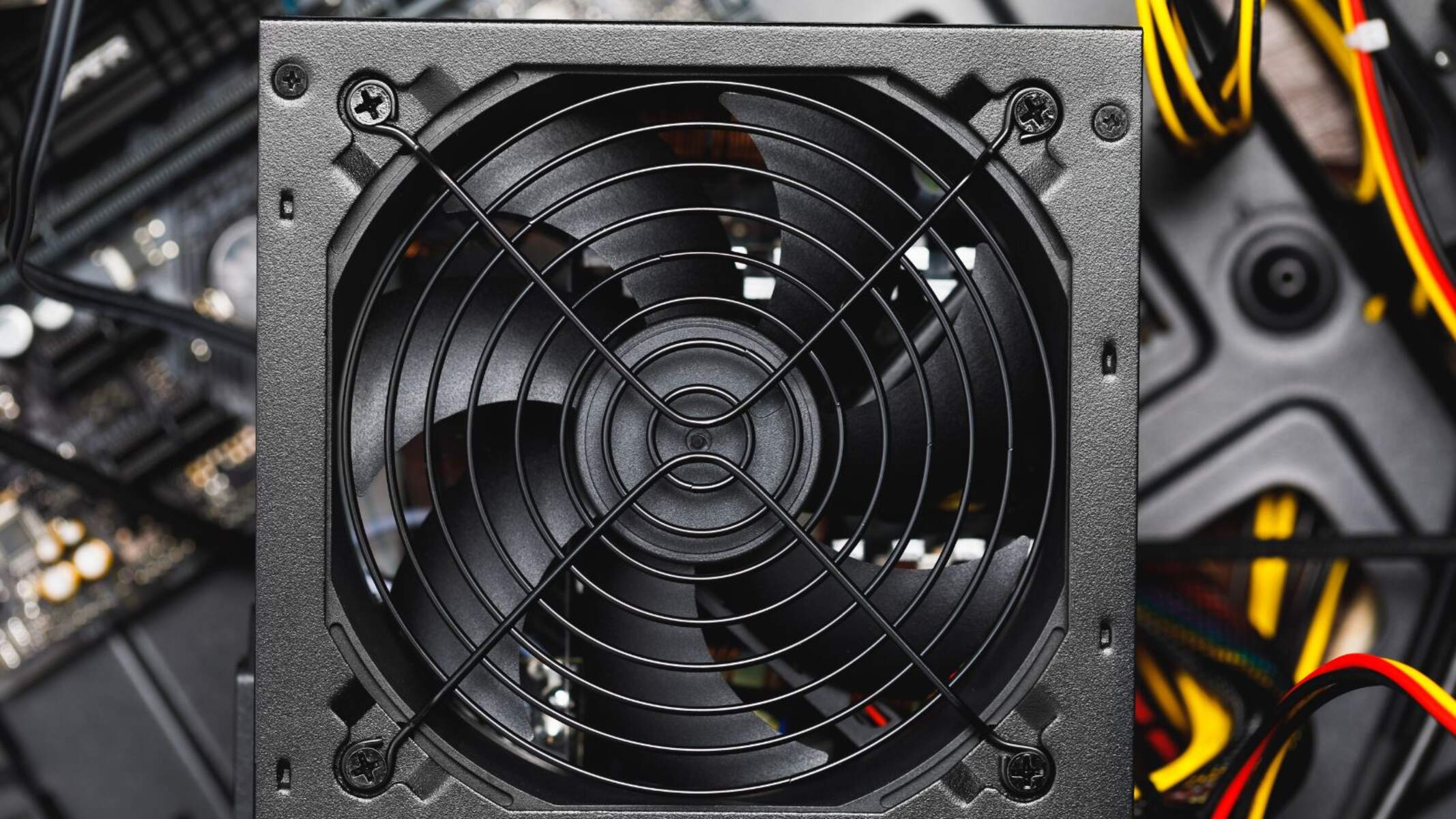Introduction
Graphics cards are essential components in computers that enable users to experience stunning visuals and seamless performance in various applications, including gaming, graphic design, and video editing. However, not all graphics cards are compatible with every PC. Compatibility between the graphics card and the rest of the system is crucial for optimal functionality and performance.
When considering upgrading or purchasing a new graphics card for your PC, it’s essential to understand the key components of a graphics card and how they interact with other hardware components in your system. This knowledge will help you determine the compatibility of the graphics card with your PC and ensure a smooth installation process.
In this article, we will explore the factors that determine graphics card compatibility and provide a step-by-step guide to help you determine if a graphics card is compatible with your PC. We will discuss compatibility with the motherboard, power supply unit (PSU), central processing unit (CPU), and random access memory (RAM). Additionally, we will cover considerations for gaming graphics cards, software and driver compatibility, and tips on researching and selecting a compatible graphics card.
By understanding the compatibility requirements and following the guidelines outlined in this article, you will be equipped with the knowledge needed to make an informed decision when selecting a graphics card for your PC.
Key Components of a Graphics Card
Before diving into graphics card compatibility, it’s important to have a basic understanding of the key components that make up a graphics card. These components work together to process and render graphics, ensuring smooth and high-quality visuals on your display.
1. Graphics Processing Unit (GPU): The GPU is the heart of a graphics card. It’s responsible for performing complex calculations and rendering images in real-time. The GPU determines the overall performance and capabilities of the graphics card. Different GPUs have varying levels of power and features, so it’s important to choose a card with a GPU that meets your specific needs.
2. Video Memory (VRAM): VRAM is dedicated memory within the graphics card used for storing and accessing data related to rendering graphics. It allows the GPU to quickly access and manipulate large amounts of image data, resulting in smoother and faster performance. More VRAM is generally beneficial for handling high-resolution textures and running graphics-intensive applications.
3. Cooling System: Graphics cards generate a significant amount of heat during operation. To prevent overheating, they are equipped with cooling systems, usually consisting of fans, heat sinks, and sometimes liquid cooling. Proper cooling is essential for maintaining optimal performance and prolonging the lifespan of the graphics card.
4. Output Ports: Graphics cards come equipped with various output ports to connect to monitors and other display devices. Common ports include HDMI, DisplayPort, and DVI. It’s important to ensure that the graphics card has the necessary ports to connect to your display and supports the desired display resolutions and refresh rates.
5. Power Connectors: Graphics cards require a dedicated power supply to operate. They are equipped with power connectors, usually in the form of PCIe power connectors, which connect directly to the power supply unit (PSU) of the computer. Different graphics cards have different power requirements, so it’s crucial to make sure your PSU can provide sufficient power for the graphics card.
Understanding the key components of a graphics card will help you make informed decisions when considering compatibility with your PC. By assessing the specifications and features of a graphics card, you can determine whether it meets your performance needs and is compatible with the other components in your system.
Understanding Compatibility
Graphics card compatibility refers to the ability of a graphics card to function effectively and seamlessly with the other hardware components in your PC. When upgrading or purchasing a new graphics card, it’s crucial to ensure that it is compatible with your system to avoid potential issues and maximize performance.
Compatibility can be assessed in several aspects, including compatibility with the motherboard, power supply unit (PSU), central processing unit (CPU), random access memory (RAM), case size, and physical dimensions. These factors play a vital role in determining whether a graphics card will work optimally with your PC.
It’s important to note that graphics card compatibility is not just limited to physical connections. It also encompasses the capability of the hardware components to handle the power requirements and data transfer speeds of the graphics card.
When considering compatibility, it’s crucial to take into account the interface type of the graphics card and the corresponding expansion slot on the motherboard. The most common interface types for graphics cards are PCIe (Peripheral Component Interconnect Express). Ensure that the graphics card’s interface matches the available expansion slot on your motherboard.
Another aspect of compatibility is the power supply. Graphics cards have different power requirements, and it’s essential to ensure that your PSU is capable of delivering sufficient power to the graphics card. Insufficient power supply can lead to instability, system crashes, or even damage to the graphics card.
The CPU and RAM also play a role in determining compatibility. Depending on the graphics card’s capabilities and requirements, it’s crucial to ensure that your CPU can handle the workload and that you have sufficient RAM for optimal performance.
Furthermore, the physical dimensions of the graphics card and the available space inside your PC case are important factors to consider. Some graphics cards are larger and may not fit in smaller cases. Carefully measure the available space and compare it with the dimensions of the graphics card to ensure compatibility.
Understanding the different aspects of compatibility will help you make an informed decision when selecting a graphics card for your PC. By considering the motherboard interface, power supply, CPU and RAM compatibility, as well as the physical dimensions, you can ensure a seamless installation and avoid any potential issues that may arise from an incompatible graphics card.
Determining Compatibility with the Motherboard
One of the key factors in determining graphics card compatibility is ensuring that it is compatible with the motherboard of your PC. The motherboard serves as the central hub that connects all the hardware components in your system. Here are some steps to help you determine compatibility with the motherboard:
1. Check the PCI Express (PCIe) Slot: Most modern graphics cards use the PCIe interface to connect to the motherboard. The first step is to check the available PCIe slots on your motherboard and ensure that they match the interface type required by the graphics card. Common PCIe slot versions include PCIe 3.0 and PCIe 4.0. It’s important to note that a PCIe 3.0 graphics card will work in a PCIe 4.0 slot, but it may not utilize the full potential of the higher bandwidth.
2. Determine the Maximum PCIe Lane Configuration: PCIe lanes determine the data transfer speed between the graphics card and the CPU. The number of available lanes can vary depending on the motherboard model. Some high-end motherboards offer multiple PCIe slots with different lane configurations, allowing for more graphics card options. Refer to the motherboard manual or specifications to identify the maximum PCIe lane configuration supported.
3. Consider the Power Delivery: Graphics cards require a certain amount of power to function properly. It’s crucial to ensure that the motherboard’s power delivery system, such as the PCIe power connectors and the power delivery capacity of the motherboard itself, is sufficient to meet the requirements of the graphics card. Check the number and type of available PCIe power connectors, such as 6-pin or 8-pin, and ensure they are compatible with the graphics card’s power requirements.
4. Research Manufacturer Recommendations: Graphics card manufacturers often provide lists of compatible motherboards or chipset models for their specific graphics cards. These compatibility lists can be found on the manufacturer’s website or within the product documentation. Checking these recommendations can help ensure a smooth compatibility match.
5. Up to Date BIOS: Lastly, make sure that your motherboard’s BIOS is updated to the latest version. BIOS updates often include improvements and bug fixes related to hardware compatibility. Check the motherboard manufacturer’s website for any available BIOS updates and follow their instructions to install them.
By following these steps and considering the PCIe slot compatibility, maximum lane configuration, power delivery, manufacturer recommendations, and up-to-date BIOS, you can determine if a graphics card is compatible with your motherboard. Taking these compatibility factors into account will help ensure a successful installation and optimal performance of your graphics card.
Compatibility with Power Supply Unit (PSU)
When considering compatibility for a graphics card, it’s crucial to assess its compatibility with the power supply unit (PSU) in your PC. The PSU is responsible for providing electrical power to all the components in your system, including the graphics card. Here are some key factors to consider when evaluating compatibility with the PSU:
1. Power Requirements: Graphics cards have specific power requirements in terms of wattage. These requirements can vary greatly depending on the model and manufacturer. It’s essential to check the power requirements of the graphics card and ensure that your PSU can supply enough power to support its operation. Most modern graphics cards require at least a 500W PSU, but high-end cards may have power demands ranging from 600W to 1000W or more.
2. PCIe Power Connectors: Graphics cards receive power through dedicated PCIe power connectors. These connectors are usually in the form of 6-pin or 8-pin connectors. It’s important to verify that your PSU has the appropriate type and number of PCIe power connectors to accommodate the graphics card. Some higher-end graphics cards may require multiple PCIe power connectors, so ensure that your PSU can meet these requirements.
3. Amperage on the +12V Rail: Graphics cards primarily draw power from the +12V rail of the PSU. It’s important to consider the amperage (A) supplied by the +12V rail and ensure that it is sufficient to meet the demands of the graphics card. The amperage required by the graphics card can typically be found in its specifications. Check the PSU’s specifications or label to determine if it can provide enough power on the +12V rail for the graphics card.
4. Modular vs. Non-Modular PSU: If you have a modular PSU (one with detachable cables), ensure that it has the necessary PCIe power cables required by the graphics card. Some higher-end graphics cards may require specific types of PCIe power cables (e.g., 6+2 pin connectors). Modular PSUs offer the flexibility to add or remove cables as needed, making it easier to accommodate different graphics card power requirements.
5. PSU Efficiency and Quality: It’s crucial to consider the efficiency and quality of the PSU. A higher-quality PSU tends to provide more stable power output, reducing the risk of potential issues or component damage. Additionally, a PSU with higher efficiency (e.g., 80 Plus Bronze, Silver, Gold) will generate less heat and consume less power, resulting in lower energy costs and better overall system performance.
Pay close attention to these compatibility factors, including power requirements, PCIe power connectors, amperage on the +12V rail, modular/non-modular PSU, and PSU efficiency and quality. Ensuring compatibility with the PSU will help provide the necessary power for the graphics card and contribute to a stable and efficient system.
Compatibility with CPU and RAM
Compatibility with the central processing unit (CPU) and random access memory (RAM) is another crucial aspect to consider when assessing the compatibility of a graphics card with your PC. The CPU and RAM work closely with the graphics card to ensure smooth and efficient system performance. Here’s what you need to know:
1. CPU Compatibility: The CPU and graphics card need to work in harmony to deliver optimal performance. The CPU’s capabilities, such as its processing power, architecture, and socket type, can impact the overall compatibility and performance. It’s important to ensure that your CPU is capable of handling the workload and demands of the graphics card. Check the recommended CPU specifications provided by the graphics card manufacturer to ensure compatibility.
2. RAM Capacity and Speed: RAM plays a significant role in supporting the graphics card’s performance. Insufficient RAM can bottleneck the system and limit the graphics card’s capabilities. Check the recommended RAM specifications provided by the graphics card manufacturer and ensure that your system has enough RAM capacity. Additionally, consider the RAM speed (in MHz) as it can have an impact on overall system performance, especially in memory-intensive tasks.
3. Memory Bandwidth: Memory bandwidth refers to the amount of data that can be transferred to and from the graphics card’s VRAM. It determines the speed at which the GPU can access and process information. The memory bandwidth of the graphics card should align with the CPU and RAM capabilities to ensure optimal performance. Consider the memory bandwidth specifications of the graphics card and assess the compatibility with your system’s CPU and RAM.
4. Supported APIs: Graphics cards rely on software APIs (Application Programming Interfaces) to communicate with the CPU and operating system. Ensure that the graphics card and CPU support the same APIs to avoid compatibility issues. Common APIs used in gaming graphics cards include DirectX and Vulkan. Check the API compatibility requirements mentioned by the graphics card manufacturer.
5. System-Building Considerations: When building a new system or upgrading your existing one, it’s crucial to plan for overall compatibility. Consider the compatibility of the motherboard, CPU, RAM, and graphics card together to ensure a harmonious system. Research and refer to compatibility guides and resources provided by the hardware manufacturers to make informed decisions.
By considering CPU compatibility, RAM capacity and speed, memory bandwidth, supported APIs, and overall system-building considerations, you can ensure that the graphics card works seamlessly with the CPU and RAM. This harmony will result in efficient system performance and an enhanced graphics experience.
Checking Case Size and Physical Dimensions
When considering the compatibility of a graphics card, it’s crucial to assess the size and physical dimensions of the card and ensure that it fits within your PC case. This step is often overlooked but is essential to avoid any installation issues or restrictions based on the available space. Here’s what you need to know:
1. Case Size and Form Factor: PC cases come in various sizes and form factors, such as ATX, Micro-ATX, and Mini-ITX. The form factor determines the overall dimensions and layout of the case. Different graphics cards have different lengths, widths, and heights, and it’s important to ensure that the size of the graphics card is compatible with the available space in your case.
2. Clearance for Length and Width: Graphics cards can vary in length, with some high-performance models being longer than standard ones. Measure the available space in your case from the rear PCIe slot to the front of the case and compare it against the length specification of the graphics card. Ensure that there is sufficient clearance for the length of the card. Additionally, consider the width of the graphics card and ensure there is enough space between the PCIe slots and any other components, such as the CPU cooler or RAM modules.
3. Height Clearance: Check the height clearance in your case, especially if you have a compact or slim case design. Some graphics cards may have taller cooling systems or additional components that could interfere with the available height in the case. Verify that there is enough space vertically to accommodate the height of the graphics card.
4. Expansion Slot Alignment: Graphics cards are installed in the PCIe expansion slots on the motherboard. Check the alignment of these slots in relation to the available space in your case. Ensure that there are no obstructions or cables that may block the installation of the graphics card. Some cases may have vertical GPU mounts, so make sure your case is compatible with this configuration if you plan to use it.
5. Other Considerations: While checking physical dimensions, it’s also important to consider factors such as the number of expansion slots needed by the graphics card, the position of the power connectors, and any additional cooling requirements. Some high-end graphics cards may occupy multiple PCIe slots and require additional power connectors. Ensure that your case supports the necessary expansion slots and has the appropriate routing for the power cables.
By checking the case size, clearance for length, width, and height, ensuring expansion slot alignment, and considering other factors such as power connectors and cooling requirements, you can determine if a graphics card is compatible with your PC case. This step is crucial to avoid any physical restrictions or installation issues during the setup process.
Factors to Consider for Gaming Graphics Cards
Gaming graphics cards are specifically designed to deliver high-quality visuals and exceptional performance in gaming applications. When selecting a gaming graphics card, there are several key factors to consider to ensure an optimal gaming experience. Here are some important factors to keep in mind:
1. Performance and Power: Gaming requires powerful graphics processing to render immersive environments and handle complex visual effects. Consider the performance metrics of the graphics card, such as its core clock speed, number of CUDA cores (for NVIDIA GPUs), and memory bandwidth. Also, take into account the power requirements of the card to ensure that your PSU can adequately support it.
2. VRAM Capacity: Virtual Random Access Memory (VRAM) plays a vital role in gaming graphics cards as it stores and quickly accesses game assets and textures. Higher VRAM capacity allows for smoother gameplay and better performance, especially in games with high-resolution textures. Aim for a gaming graphics card with sufficient VRAM capacity to match the desired gaming resolution and settings.
3. Cooling Solution: Gaming sessions can put a significant load on the graphics card, resulting in increased heat generation. Look for a graphics card with an efficient cooling solution, such as multiple fans or an advanced cooling system, to ensure optimal temperatures and prevent thermal throttling. Effective cooling will also contribute to the longevity and stability of the graphics card.
4. Display Connectivity: Consider the display connectivity options available on the graphics card. Gaming graphics cards usually feature multiple display outputs, including HDMI, DisplayPort, and DVI. Ensure that the graphics card has the necessary outputs to connect to your gaming monitor or multi-monitor setup, with support for the desired resolution and refresh rate.
5. Gaming Software and Features: Evaluate the gaming software and features offered by the graphics card manufacturer. Some graphics cards come bundled with software utilities that allow for easy tweaking of settings, overclocking, and performance optimization. Additionally, consider features like real-time ray tracing and artificial intelligence (AI) enhancements that can greatly enhance visual fidelity and gaming immersion.
6. Compatibility with Other Gaming Equipment: If you have other gaming peripherals and equipment, such as virtual reality (VR) headsets or high-refresh-rate monitors, ensure that the graphics card is compatible and can provide the necessary performance for an optimal experience with those devices.
7. Budget Considerations: While gaming graphics cards offer a wide range of performance and features, it’s important to consider your budget. Determine the level of performance you require for your gaming needs and find a graphics card that strikes a balance between performance, features, and cost.
When considering a gaming graphics card, take into account its performance and power, VRAM capacity, cooling solution, display connectivity, gaming software and features, compatibility with other gaming equipment, and your budget. By considering these factors, you’ll be equipped to make an informed decision and select a gaming graphics card that meets your specific gaming requirements.
Software and Driver Compatibility
When choosing a graphics card, it’s crucial to consider software and driver compatibility to ensure seamless operation and optimal performance. Software and drivers play a critical role in enabling the graphics card to communicate with the operating system and run efficiently. Here are some key aspects to consider:
1. Operating System Support: Ensure that the graphics card is compatible with your operating system (OS). Graphics card manufacturers provide drivers for various operating systems, including Windows, macOS, and Linux. Check the official website of the graphics card manufacturer to verify the availability of drivers for your specific OS version.
2. Driver Updates: Graphics card manufacturers regularly release driver updates to improve performance, address issues, and provide support for new games and applications. It’s important to choose a graphics card from a manufacturer known for providing reliable and timely driver updates. Regularly updating your graphics card drivers ensures compatibility with the latest software and delivers optimal performance.
3. Graphics Card Control Software: Graphics card manufacturers often offer control software that allows users to fine-tune settings, monitor performance, and customize features. Check if the graphics card you are considering comes with control software and assess its features and usability. Ensure that the software is compatible with your operating system and offers the functionality you desire.
4. Game Optimization Software: Some graphics card manufacturers provide game optimization software that automatically adjusts game settings based on your hardware capabilities. This software can enhance performance and provide the best graphics settings for an optimal gaming experience. Check if the graphics card you are considering offers such optimization software and whether it supports the games you frequently play.
5. Multi-GPU Support: If you plan to use multiple graphics cards in a SLI (Scalable Link Interface) configuration, ensure that the graphics card supports it. SLI is a technology that allows multiple graphics cards to work together to provide increased graphical power. Not all graphics cards are compatible with SLI, so verify the compatibility before making a purchase.
6. Virtual Reality (VR) Support: If you are interested in using virtual reality headsets or applications, check if the graphics card has official support for VR. VR support requires specific optimizations and features to deliver a smooth and immersive VR experience. Ensure that the graphics card meets the VR requirements and has the necessary software and drivers for seamless VR compatibility.
Be sure to consider software and driver compatibility when selecting a graphics card. Choosing a graphics card that is compatible with your operating system, regularly updated by the manufacturer, includes useful control software, offers game optimization features, supports multi-GPU configurations if needed, and provides VR support will ensure a smooth and hassle-free experience with your graphics card.
Researching and Selecting a Compatible Graphics Card
Researching and selecting a compatible graphics card requires careful consideration to ensure that it meets your specific needs and is compatible with your PC. It’s important to evaluate various factors, including performance requirements, compatibility with your system, budget constraints, and long-term considerations. Here’s a step-by-step guide to help you in the research and selection process:
1. Define Your Requirements: Determine your specific requirements, such as the intended usage (e.g., gaming, video editing, graphic design) and the level of performance you desire. Consider factors like resolution, frame rates, and graphical settings for gaming applications. This will help narrow down the options and focus your research.
2. Assess Compatibility: Check the compatibility of the graphics card with your system’s motherboard, power supply unit (PSU), CPU, RAM, and case. Consider factors like interface type, power requirements, available PCIe slots, and physical dimensions. Ensure that the graphics card fits within your system and works seamlessly with the other hardware components.
3. Set a Budget: Determine your budget for the graphics card. Price ranges can vary significantly depending on the performance level and features offered. It’s essential to strike a balance between your budget and the desired performance. Research graphics cards within your price range and compare their specifications, reviews, and performance benchmarks.
4. Research Performance and Reviews: Look for performance benchmarks and reviews of different graphics cards. Websites and forums dedicated to PC hardware provide comprehensive reviews and comparisons. Pay attention to metrics like gaming performance, power consumption, and cooling efficiency. User reviews can also offer insights into real-world experiences and potential issues.
5. Consider Future Upgrades: Think about your future needs and upgrades. If you plan to upgrade other components of your system in the future, consider if the graphics card will still be compatible or if it may become a bottleneck. Assess the potential for future upgrades and evaluate if the selected graphics card aligns with your long-term plans.
6. Compare Manufacturer Support: Research the reputation and support provided by the graphics card manufacturer. Consider factors like driver updates, warranty coverage, customer service, and software features. A manufacturer with a good track record of driver support and reliable customer service can enhance the overall experience with the graphics card.
7. Check for Added Features: Consider any additional features offered by the graphics card, such as real-time ray tracing, AI enhancements, software utilities, or bundled games. These features can provide additional value and enhance the graphical capabilities of your system.
By following these steps and conducting thorough research, you can select a compatible graphics card that meets your performance requirements, fits within your budget, and is supported by a reputable manufacturer. Remember to compare multiple options, read reviews, and consider long-term compatibility to make an informed decision.
Conclusion
Choosing a compatible graphics card for your PC involves careful research and consideration of various factors. By understanding the key components of a graphics card, assessing compatibility with the motherboard, power supply unit, CPU, and RAM, checking case size and physical dimensions, and considering factors specific to gaming graphics cards, you can make an informed decision.
Software and driver compatibility play a vital role in ensuring that the graphics card functions seamlessly with your operating system and delivers optimal performance. Researching and selecting a compatible graphics card involves defining your requirements, assessing compatibility, setting a budget, researching performance and reviews, considering future upgrades, comparing manufacturer support, and evaluating additional features.
Remember to strike a balance between your budget and desired performance, considering long-term compatibility and potential upgrades. Take into account the reputation and driver support of the manufacturer to ensure a positive experience with the graphics card. Thorough research and consideration of these factors will guide you in selecting a compatible graphics card that meets your needs and enhances the performance and visuals of your PC.

























